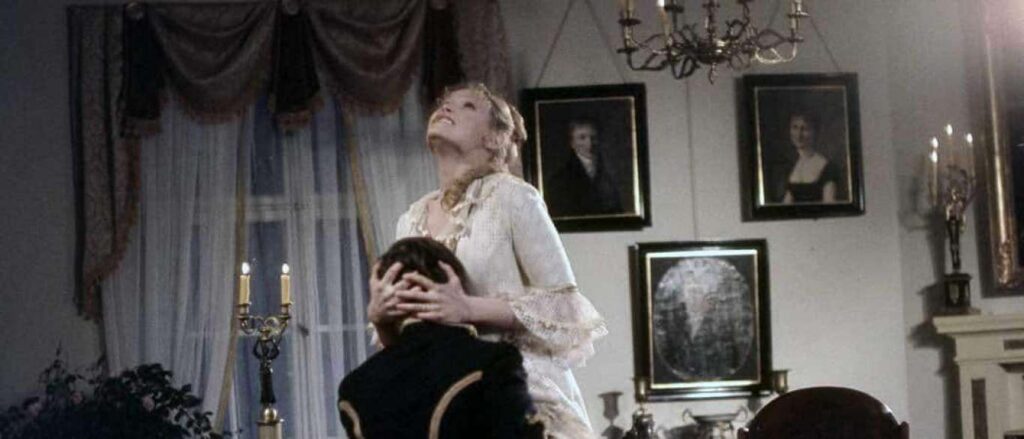
Wilczyca (1983) is a Polish horror film directed by Marek Piestrak. Piestrak specialized in modestly budgeted horror films that typically had either a folkloric or Gothic bent. Wilczyca is a finely stylized exercise in the former category with plenty of the atmosphere imported from the latter.
Jerzy Gierałtowski’s screenplay tells the tale of Wosinski (Krzysztof Jasinski), a captain of the guards, whose wife curses him on her death bed and exacts her vengeance via the possession of the Countess Julia (both women are played by Iwona Bielska), wife of Wosinski’s lord and master. Countess Julia has become the titular she-wolf and can only be destroyed by a silver bullet.
Piestrak’s stylistic execution of Wilczyca is best described as an intersection of aesthetics; chiefly those of the Hammer Horror film and those of cinematic eroticist Walerian Borowczyk. But Piestrak’s world is far bleaker than either. Wilczyca is a film set in a remote corner of Poland in the dead of winter where death and decay populate the landscape in the form of animal carcasses and rotting trees.
The physical bleakness of the world Piestrak creates in Wilczyca reflects the political situation in early nineteenth century Poland. At the time that Wilczyca is set the Polish-Lithuanian Commonwealth had been dissolved and Poland itself was a disputed territory occupied by Imperial Russia on the one side and the Kingdom of Prussia on the other. The lord Wosinski serves would have been a minor noble asserting political autonomy over his fiefdom. Based on the presence of Hussars in Wilczyca it seems safe to assume that the party that Wosinski and his lord were rebelling against was the Prussians.
Wilczyca could be read as a feminist revolt squashed by the patriarchal figure of the husband. However, Wilczyca doesn’t really support such a reading by casting the husband as the protagonist. As is the case with older horror films progressive elements to the narrative lie buried beneath the conventions of the genre.
